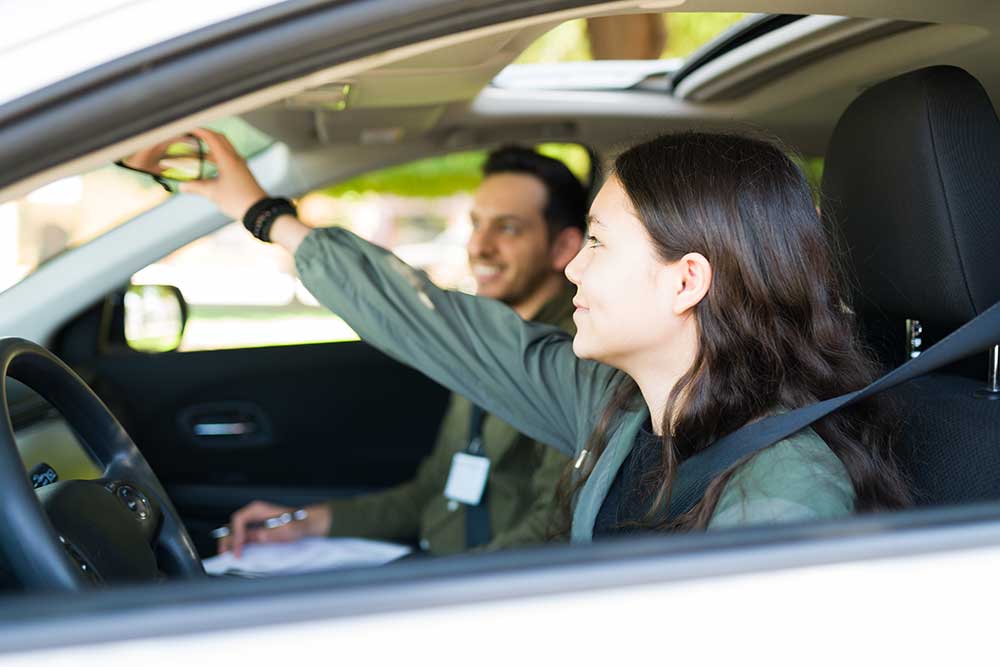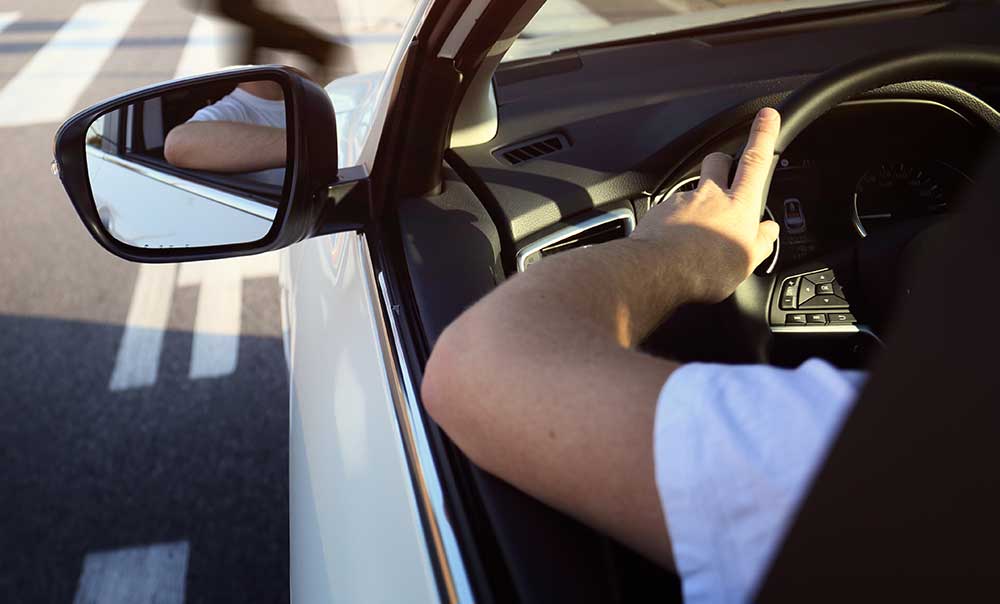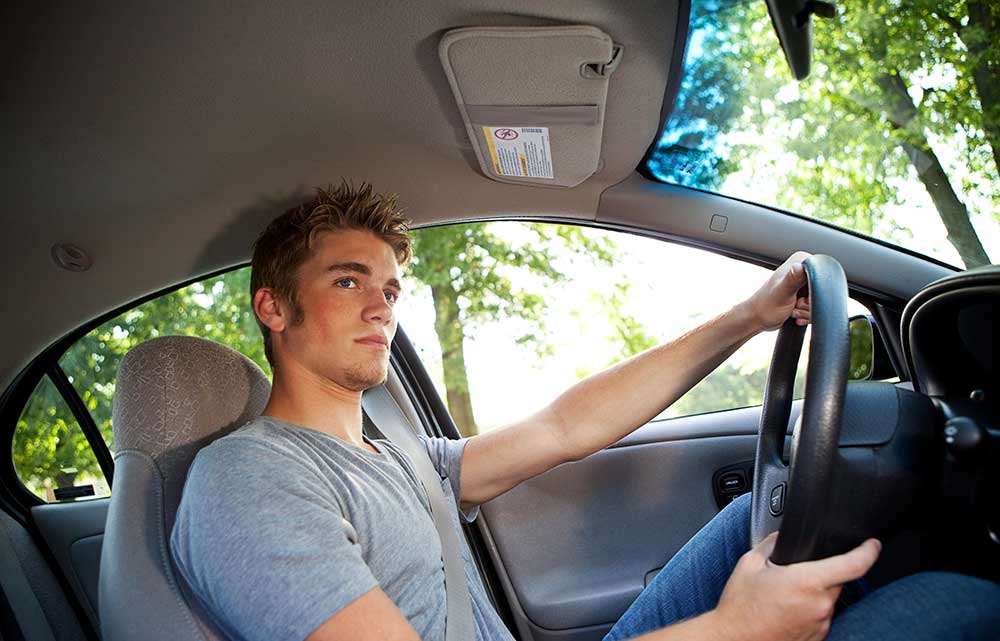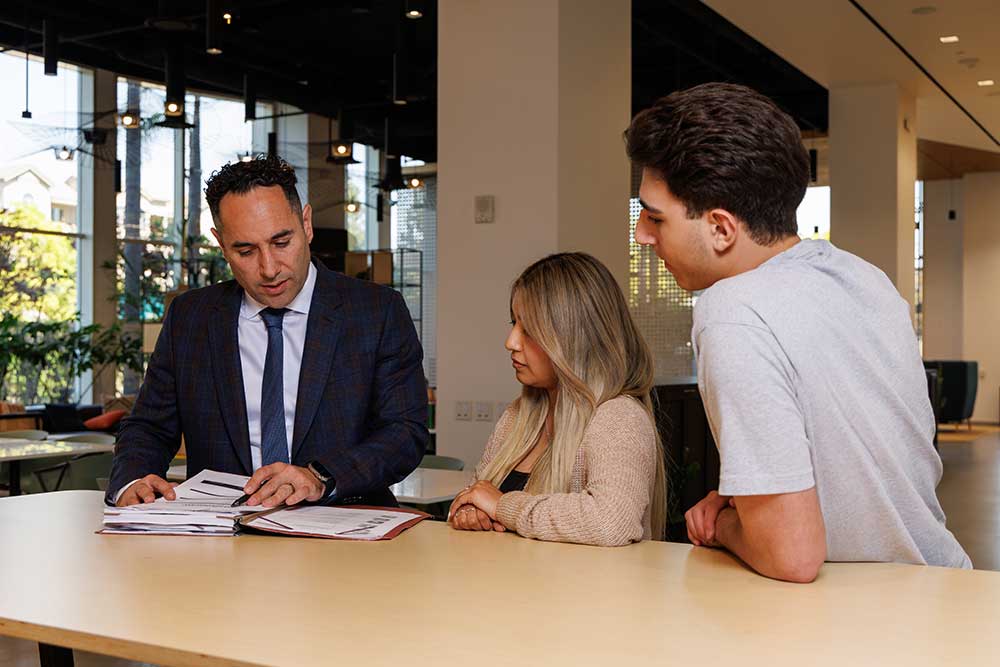The Support You Need. The Settlement You Deserve.
Home » Personal Injury » California Car Accident Lawyer » Ultimate Guide for Teen Driving Safety in California
Getting a learner’s permit or driver’s license is a part of growing up.
Most teens look forward to the day they can steer their own destinies on California freeways and boulevards. But before they can get their driver’s license and venture out on their own, they must learn the many lessons of the road.
A strong foundation in traffic safety knowledge will benefit young drivers and hopefully, keep them safe until they can get some real-life experiences on the road.
Maison Law compiled this ultimate guide for teen driving safety to give young drivers and their parents an easy checklist of some of the things they’ll need to know before embarking on this new adventure.
California makes certain that new drivers are well aware of the dangers they’ll face before they ever get to hold a learner’s permit. The California DMV requires teens to complete several important steps before they are able to drive with their parents and eventually alone.
Teens anxious to log some practice miles will first need to secure an instruction permit. Teens must be at least 15 ½ years old but under 18 to get an instruction permit.
Here are the steps teens will take to secure a California instruction permit:
Hopeful drivers will pay an application fee during their DMV office visit. They’ll get a fingerprint scan and take a vision exam. A photograph will be taken. Proof of car insurance will be required.
Teens will take a knowledge test. This test can be taken online before the DMV visit. Failing the knowledge test will mean teens must wait seven days to take it again.
There may be a no more hazardous time in a teen’s driving adventure than when those first miles are rolled out. Practice will be key, but the California DMV wants to make sure that new drivers don’t face this new experience alone.
Teens with instruction permits cannot drive alone at any time. They are allowed to practice driving with an adult in the passenger’s seat. The adult must be close enough to be able to take control of the vehicle if necessary.
The adult must be someone who is at least 25 years old. The person is often a parent or guardian or a driving instructor. This requirement of a co-pilot should never be ignored. New drivers benefit the most from having an experienced voice in their ears, showing them the hazards to watch out for.

A minor (under the age of 18) will need to have an instruction permit for at least 6 months before applying for a provisional (minor’s) driver’s license.
Applicants must be at least 16 years old and have at least 50 hours of practice driving completed. Ten of those hours will have to have been at night. Teens need to have completed driver education and driver training and all knowledge tests required. They will also be subjected to a behind-the-wheel driving test.
Restrictions on California Drivers Under 18
Once teens have a provisional driver’s license in hand they get a little freedom.
There are specific things teens with a provisional driver’s license can and can’t do:
There are exceptions to some of these rules covered in the California Driver Handbook.
When drivers turn 18 the “provisional” restrictions on their driver’s licenses are lifted. However, traffic accidents and violations can result in license suspension.
By now every teen should be well acquainted with some of the most basic safe driving bullet points. Yet, teens are at the most risk for accidents because they sometimes forget what they’ve learned and make poor decisions.
These are simple safety precautions that can reduce accident risks and keep teens safer when they are in unfortunate collisions:

The biggest distraction for any driver, especially teenagers, will be the screens on their cell phones. Cell phones can beep and chime when a new message or call arrives, but minors are legally prohibited from checking their phones.
If you are under 18 years old and driving, cellphone use is illegal, even when it’s in hands-free mode. Minors may not text or make calls while behind the wheel.
Minors may only use their cell phones to call certain emergency services. They can use their cell phones to call these and other emergency care providers:
Maison Law has a complete page with more information on California’s cell phone laws.
The California DMV reports that teenagers as a group average twice as many collisions as adult drivers. And that’s while logging only half as many road miles. The teenage collision rate per mile is 4 times greater than the adult driver collision rate per mile.
One way teen drivers (and all drivers) can reduce their chances of getting into a collision is to be aware of the circumstances that present the most risk. There are certain spots and situations in every California city and county that lead to an increased chance for traffic incidents.
These are just some of the dangers teen drivers should be aware of:
Defensive driving is a safe practice that reminds you to monitor your own driving and the driving of others. As a new driver, you can be as safe as possible and still be forced into an accident by a bad driver.
You’ll avoid many more collisions over your driving career when you learn to anticipate the careless maneuvers of other motorists.
Here are just a few of the many strategies that will leave you in a better position to steer clear of a crash:

Teen drivers are in more accidents because they lack the experience of older drivers. But we all know that some adults never get much better at driving. They remain careless in the lanes and may even take reckless chances, endangering everyone else on the road.
Teens can make mistakes, but that doesn’t mean they are at fault in every accident. Auto insurance companies will often try to place the blame on vulnerable teen drivers no matter what a collision report says. They hope to avoid having to pay fair compensation.
The health of the teen and other injured victims should be the first concern after a crash. But once a scene is secure, if teens are feeling strong enough, they should work to secure important pieces of evidence on the scene. This proof of what happened may save teen drivers and their parents from an unfair hike in auto insurance rates. It could also force the real at-fault driver to accept responsibility for an injured teenager’s recovery bills.
Teens should attempt to secure this evidence at the scene of an accident:
No. An insurance adjuster will be calling you after an accident. They’ll ask you to make a recorded statement. Refuse and only offer basic info. They hope you’ll say something they can twist to hurt your case later.
Teens probably don’t need a brand-new car, but a car that’s too old may be lacking in the latest safety features. Research used cars that meet the highest safety standards. Avoid buying a teen a sports car.
Beyond safe driving practices, your teens should know how to change a flat tire. They should also know how to check tire pressure, and oil levels, and how to perform other routine car maintenance.
Even the safest adult drivers can wind up in bad accidents that weren’t their fault. Teens are at the same risk. No amount of caution can keep them completely protected from the careless motorists that travel California roads each day.
If you or your child are in a serious accident, talk over your options with a skilled California Car Accident Lawyer at Maison Law. Insurance companies can treat teen drivers unfairly and try to blame them for accidents they didn’t cause. Car insurance adjusters can also leave injured teenagers without the support they need to recover and get back on their feet.
Contact Maison Law for a free legal consultation on your accident. Tell us what happened to you or your teenage driver so that we can help you determine what your case is worth and how to force an auto insurance provider to offer fair compensation.

This website contains legal information that is available to the general public. The content on this website is not legal advice. It is intended for informational purposes only. Anyone seeking legal advice should retain an attorney. Use of this website in any manner, including but not limited to chat or contact form submissions, does not create an attorney-client relationship.
This website contains legal information that is available to the general public. The content on this website is not legal advice. It is intended for informational purposes only. Anyone seeking legal advice should retain an attorney. Use of this website in any manner, including but not limited to chat or contact form submissions, does not create an attorney-client relationship.